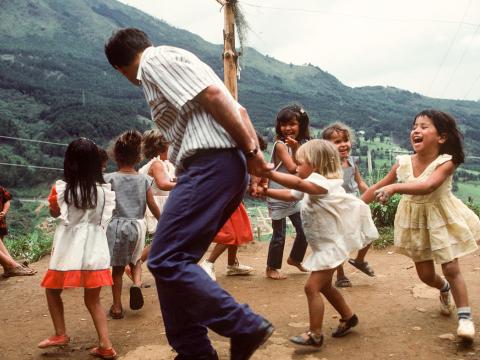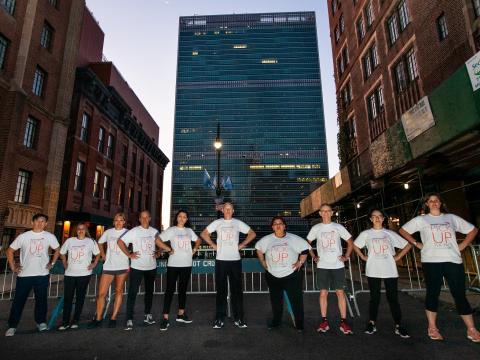
Securing Our Future: Placing Children at the Center of Global Solutions
As Dana Buzducea leads World Vision’s efforts to place children at the center of global agenda, including as regards to the UN’s “Pact for the Future”, she reflects on the complex global landscape and urgent need for concerted action to counter erosion of hard-won progress and address the disproportionate impact on children, particularly the most vulnerable.
When World Vision adopted our global strategy, Our Promise in 2017, our hope was that by 2030, meaningful changes would result in measurable improvements in the well-being of the most vulnerable children. Moreover, we envisioned a future of hope and transformation for all children, everywhere. We could not have anticipated that, despite the profound impact of our programs on millions of children and families, the number of vulnerable children would increase so dramatically.
The rapid deterioration of contexts in recent years, exacerbated by the convergence of multiple crises, has eroded the hard-won progress of past decades, and now poses existential threats to children’s survival in far too many parts of the world. As a result, our aspiration to witness children thrive and fully realize their God-given potential has been pushed further out of reach.
In September, Heads of State will come together at the “Summit of the Future” to revitalize multilateralism and global governance, essential for addressing the fractured state of our world which threatens human rights, development, and economic growth. As UN Secretary-General Antonio Guterres cautioned, failure to seize this occasion risks plunging the world into what he calls “an age of chaos”.
Central to the agenda of the “Summit of the Future” is the adoption of the “Pact for the Future” (Pact) that will serve as a blueprint for actionable solutions. World Vision is advocating on behalf of children to ensure they are front and center within the Pact, as the decisions made within its framework will profoundly shape children’s futures.
Regrettably, children’s interests are largely absent in the current draft of the Pact, a concern shared by many Member States.
To address this oversight, World Vision has proposed the following actions to the Pact:
- Mainstreaming child rights across all chapters
- Chapter 4 – “Youth and future generations” be inclusive of children
- Recognizing that “Future generations” are distinct from “children”
- Recognizing the unique status of “children” in international law
1. Child rights mainstreamed across all chapters.
Mainstreaming child rights in the Pact not only ensures the protection and fulfillment of children’s rights but also strengthens the capacity of States to fulfil their obligations ensuring the promotion, protection, and fulfilment of all UNCRC rights, including accountability and access to justice. It will empower all children to know, exercise, and claim their rights, and will recognize children as key actors of civil society with a specific right to be heard and participate in public affairs. In addition, this approach is rooted in the principles enshrined in the UN Convention on the Rights of the Child (UNCRC), its Optional Protocols and other international human rights instruments.
2. Chapter 4 – “Youth and future generations” clearly includes children
World Vision has further proposed that Chapter 4 (Youth and future generations) in the draft Pact, is more specific on how it will include children. It has often been observed that children are conflated into youth despite their needs and experiences being significantly different.
3. “Future generations” distinct from “children”
Children are also distinct from “future generations.” If we fail to deliver to the current generation of children -- if their perspectives, abilities, opportunities, and challenges are omitted from the Pact, and references focus solely on “youth,” “young people,” and “future generations,” -- their status as children will not be accounted for in UN and national processes.
4. Recognize unique status of “children” in international law distinct from “youth” and “young people”
Distinguishing children from “youth” and “young people,” and recognizing their distinct status as rights holders under international law, is essential. In the same way that children and adults do not experience life in the same manner, neither do children nor youth. Children and youth are not a homogenous group but have unique needs and perspectives that are essential to identifying, addressing, and solving issues at different stages throughout their development and transition to adulthood.
Civil Society and NGOs working together
In short: If children are not specifically included in the UN and national processes, then gaps in planning, budgeting, and implementation risk leaving today’s children and future generations behind.
Children must be at the center of collective global efforts and the SDGs --as outlined in the 2030 Agenda--to meet these goals and to provide hope of a sustainable, peaceful, and prosperous future for generations to come.
Dana Buzducea is World Vision’s global leader for advocacy and external engagement.
